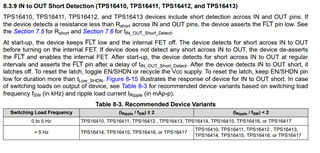Tool/software:
Hi,
We assembled some 10 samples of our new PCB that uses the TPS16416 as protection device.
We had two cases:
1. While a colleague was making some tests heard and saw a spark when plugging the PCB to a bench power source and everyone assumed that he did something wrong as there were many cables around.
2. Today (one week later) another colleague was testing a new firmware, while having everything disconnected to the PCB, from a different bench power supply set at 20VDC output and limited to 200mA maximum output: first connected GND to the PCB and before he could even touch the VCC connector of the PCB with the power connector a spark could be seen between.
In both previous cases the result is the same: the TPS16416 is shorted and there is no output, we tried disconnecting the PCB and connecting it to power, also waiting for all capacitors to be discharged but not luck in any of the cases. After that, in one of the PCBs, we tried bypassing the TPS16416 input and output to see an small spark above the TPS16416 and some smoke.
IN both previous cases the solution is the same: removing the TPS16416 from the PCB and shorting the input with the output. Everything works great without the TPS16416.
As we dont know what could be causing this we would like to ask your advice/opinion about this. We have made many tests everyday and we have plugged/unplugged many times the PCBs but only two times we saw this issue.


